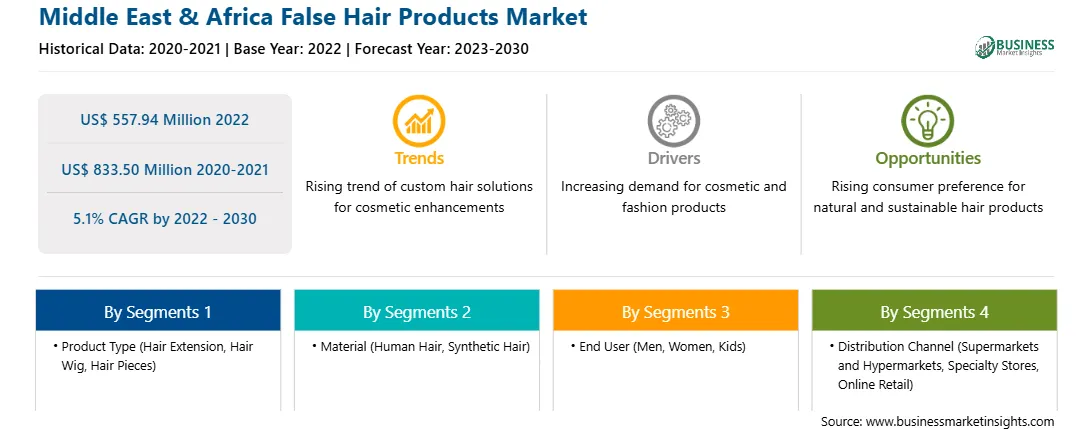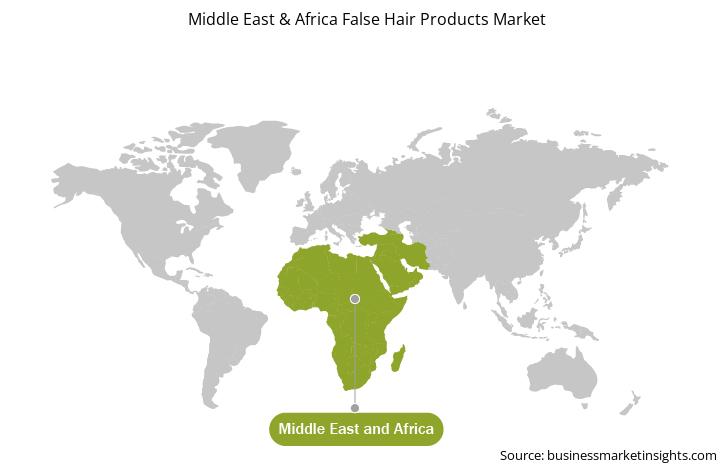Social media platforms have integrated shopping facilities, which allow several influencers and hairstylists to promote and sell false hair products online. Consumers tend to purchase false hair products and skin-related products to enhance their appearance on social media platforms. Moreover, the growing adoption of false hair products by famous Hollywood and social media celebrities, influences viewers to use false hair products to create looks inspired by these celebrities.
Several false hair products companies prefer Instagram, Facebook, Pinterest, YouTube, and other social media platforms to endorse their brand and work. Such organizations record clients' best hair transformation videos and upload them on social media platforms to showcase their work and reach target consumers. Secret Hair is one such company that has grown through social media by showcasing its work and using appropriate hashtags to reach the desired consumers. Instagram is among the most used social media platforms to sell false hair products. False hair products are best shown off in consumer-generated content, where they exhibit their hair wig or hair extension in video and picture tutorials. Therefore, the rising use of social media platforms to promote false hair products is expected to bolster the false hair products market in the coming years.
The Middle East & Africa false hair products market is segmented into South Africa, Saudi Arabia, the UAE, and the Rest of Middle East & Africa. The market is predominantly driven by the passion among women to achieve longer and high-volume hair and cultural and religious customs that place high importance on the hair & beauty industry. The countries such as Saudi Arabia, the UAE, and Qatar have a considerable and growing market for false hair products.
In Africa, the false hair products market is expanding rapidly due to the rising popularity of braided and other elaborate hairstyles. Countries such as Ghana, Nigeria, South Africa, and Kenya have a large and growing market for false hair products. Cultural and religious aspects play a noteworthy role in the false hair products market in the region, with many women opting for modern hairstyles that cover their hair or add volume and length to their natural hair. Many women prefer wearing false hair products to add extra volume or length to their natural hair while maintaining a modest appearance. The religions in the Middle East & Africa have precise requirements regarding the appearance of hair, particularly for women. In Islam, women are needed to cover their hair in public, while in Orthodox Judaism, married women are expected to cover their hair with a headscarf or wig. As a result, the demand for false hair products that capitulate with religious dress codes can be high in specific communities.
The Middle East & Africa false hair products market is segmented product type, material, end user, distribution channel, and country.
Based on product type, the Middle East & Africa false hair products market is segmented into hair extension, hair wig, and hair pieces. The hair extension segment held the largest market share in 2022.
Based on material, the Middle East & Africa false hair products market is bifurcated into human hair and synthetic hair. The synthetic hair segment held a larger market share in 2022.
Based on end user, the Middle East & Africa false hair products market is segmented into men, women, and kids. The women segment held the largest market share in 2022.
Based on distribution channel, the Middle East & Africa false hair products market is segmented into supermarkets and hypermarkets, specialty stores, online retail, and others. The specialty stores segment held the largest market share in 2022.
Based on country, the Middle East & Africa false hair products market is segmented into South Africa, Saudi Arabia, the UAE, and the Rest of Middle East & Africa. The Rest of Middle East & Africa dominated the Middle East & Africa false hair products market share in 2022.
Balmain Hair Group BV, Easihair Pro, Evergreen Products Group Ltd, HairUWear Inc, and Klix Hair Inc are some of the leading companies operating in the Middle East & Africa false hair products market.
Strategic insights for the Middle East & Africa False Hair Products provides data-driven analysis of the industry landscape, including current trends, key players, and regional nuances. These insights offer actionable recommendations, enabling readers to differentiate themselves from competitors by identifying untapped segments or developing unique value propositions. Leveraging data analytics, these insights help industry players anticipate the market shifts, whether investors, manufacturers, or other stakeholders. A future-oriented perspective is essential, helping stakeholders anticipate market shifts and position themselves for long-term success in this dynamic region. Ultimately, effective strategic insights empower readers to make informed decisions that drive profitability and achieve their business objectives within the market.

| Report Attribute | Details |
|---|---|
| Market size in 2022 | US$ 557.94 Million |
| Market Size by 2030 | US$ 833.50 Million |
| CAGR (2022 - 2030) | 5.1% |
| Historical Data | 2020-2021 |
| Forecast period | 2023-2030 |
| Segments Covered |
By Product Type
|
| Regions and Countries Covered | Middle East and Africa
|
| Market leaders and key company profiles |
|
The geographic scope of the Middle East & Africa False Hair Products refers to the specific areas in which a business operates and competes. Understanding local distinctions, such as diverse consumer preferences (e.g., demand for specific plug types or battery backup durations), varying economic conditions, and regulatory environments, is crucial for tailoring strategies to specific markets. Businesses can expand their reach by identifying underserved areas or adapting their offerings to meet local demands. A clear market focus allows for more effective resource allocation, targeted marketing campaigns, and better positioning against local competitors, ultimately driving growth in those targeted areas.

The Middle East & Africa False Hair Products Market is valued at US$ 557.94 Million in 2022, it is projected to reach US$ 833.50 Million by 2030.
As per our report Middle East & Africa False Hair Products Market, the market size is valued at US$ 557.94 Million in 2022, projecting it to reach US$ 833.50 Million by 2030. This translates to a CAGR of approximately 5.1% during the forecast period.
The Middle East & Africa False Hair Products Market report typically cover these key segments-
The historic period, base year, and forecast period can vary slightly depending on the specific market research report. However, for the Middle East & Africa False Hair Products Market report:
The Middle East & Africa False Hair Products Market is populated by several key players, each contributing to its growth and innovation. Some of the major players include:
The Middle East & Africa False Hair Products Market report is valuable for diverse stakeholders, including:
Essentially, anyone involved in or considering involvement in the Middle East & Africa False Hair Products Market value chain can benefit from the information contained in a comprehensive market report.